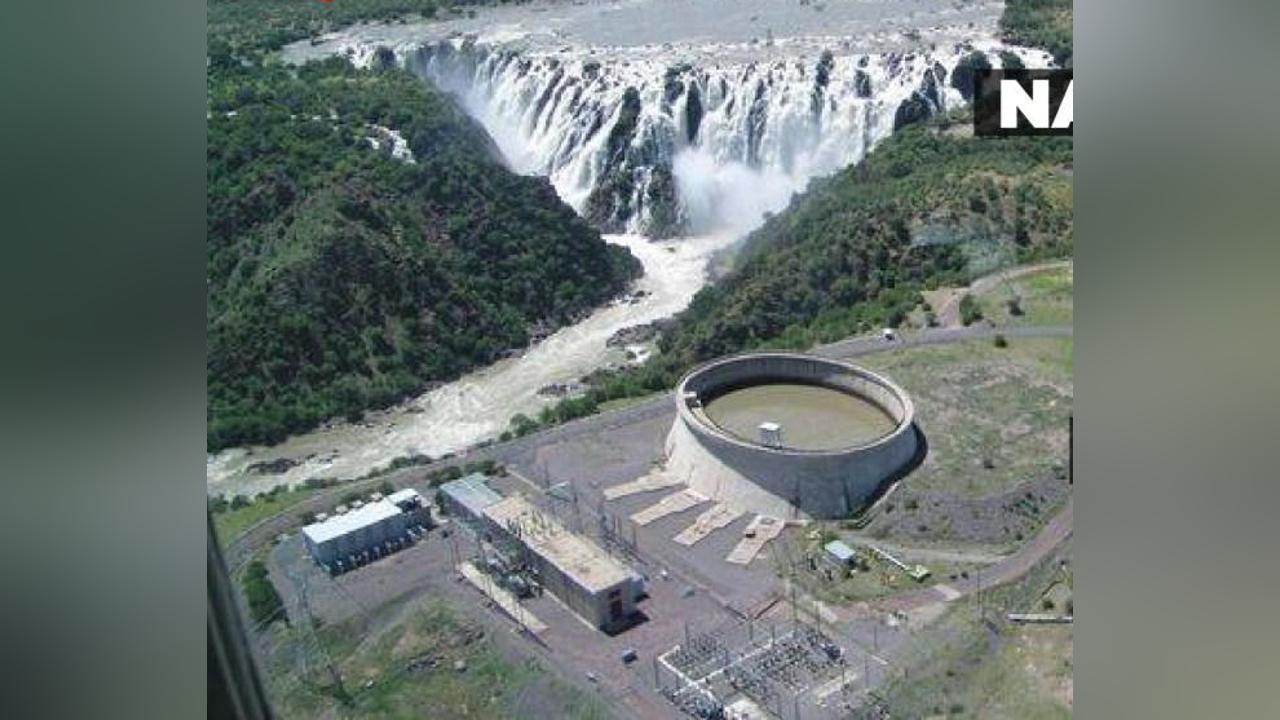Africa-Press – Namibia. NAMIBIA is expected to source 53% of its national demand for electricity via local generation, with the remaining 47% to be met through regional imports.
This comes after the Ruacana Hydropower Plant, the country’s primary source of local energy generation during the period 2023/2024, achieved one of its best productions in years, generating 2,067 GWh (Gigawatt-hours or one billion watt-hours) due to favourable water management and water flow conditions.
This was shared by Robert Kahimise, the CEO of the Electricity Control Board (ECB), during the announcement of the NamPower bulk tariff.
Kahimise said that after due consideration, especially the impact on the affordability of electricity, and in accordance with the ECB tariff review methodology, the ECB Board resolved to approve a 3.8% increase for NamPower instead of the 17.44% initially requested by NamPower.
He added, however, that the 3.8% increase will be supported with financial assistance of N$283 million by the shareholder (Namibian Government), equivalent to 3.8%. This adjustment changes the average tariff from the current approved rate of N$1.9856 per kWh to N$2.0611 per kWh for the financial period 2025/2026.
“Regarding the impact of the approved bulk tariff on the economy, with the tariff increasing by 3.8%, below the current inflation rate of 4.2% (March 2025), it is expected that the tariff adjustment will have minimal impact on future inflation as well as on prices of goods and services. But it will slightly negatively impact GDP growth, as electricity cost is a component of the inflation calculation,” Kahimise said.
He added that factors that influenced the tariff increase include the rise in the return on assets and depreciation due to the revaluation of the transmission regulatory asset base, which rose from N$14.55 billion to N$21.4 billion.
Kahimise added that the ECB also considered the cost of electricity generation, particularly the expenses associated with imported electricity.
“Approximately 29% of the generation cost is denominated in US dollars, making it susceptible to currency exchange fluctuations,” the ECB CEO explained.
Further, he added that NamPower’s revenue is based on the approved budgeted costs, volumes (energy and capacity), and tariffs.
“The 2023/2024 period saw an over-recovery of N$596.3 million, attributed to higher-than-projected generation from the Ruacana Hydropower Plant. This over-recovery was considered to reduce the revenue requirement, and therefore provide relief to customers. We wish to highlight that the ECB assessed the various financial impacts of the tariff increase of 3.8% and Government financial support of N$283 million on NamPower’s financial sustainability, and we confirm that NamPower will remain financially sustainable,” Kahimise said.
Touching on the security of electricity supply, he added that compared to other generation sources, electricity is generated relatively cheaply at the Ruacana Hydropower Plant.
“Therefore, less generation at Ruacana results in increased generation of power from expensive alternatives or imports at higher costs. Hydropower is generally considered a low-cost source of electricity,” Kahimise said.
He added that notably, there has been an increase in local generation from renewable energy plants over the period. To complement local generation, two plants have been added to the national grid in the 2024/2025 period, which include the Anixas II — 58MW (Megawatt or one million watts) (Heavy Fuel Oil), and the Khan Solar PV — 20MW.
Kahimise said that the two abovementioned plants are part of the 79 electricity generation licenses (excluding standby generators) that the ECB has issued, out of which 41 are operational and 38 are still under development.
“The Electricity Control Board is concerned about the country’s reliance on imports and supports efforts to address the security of supply. Namibia thus needs to urgently develop a Base Load Power Plant that will stabilise and enhance the security of supply and result in cheaper locally generated electricity than imports. Baseload power is the reliable minimum amount of electricity supplied, or consistently required, to meet demand over a long period, typically 24 hours. Government’s financial support towards capital investments for such a plant, as opposed to funding operational activities of licensees, will thus be a sustainable way of addressing reliability and affordability in the long run. Investments towards a baseload plant must be accompanied by other investments in strengthening transmission infrastructure, to unlock local generation capacity and export potential,” Kahimise said.
For More News And Analysis About Namibia Follow Africa-Press






